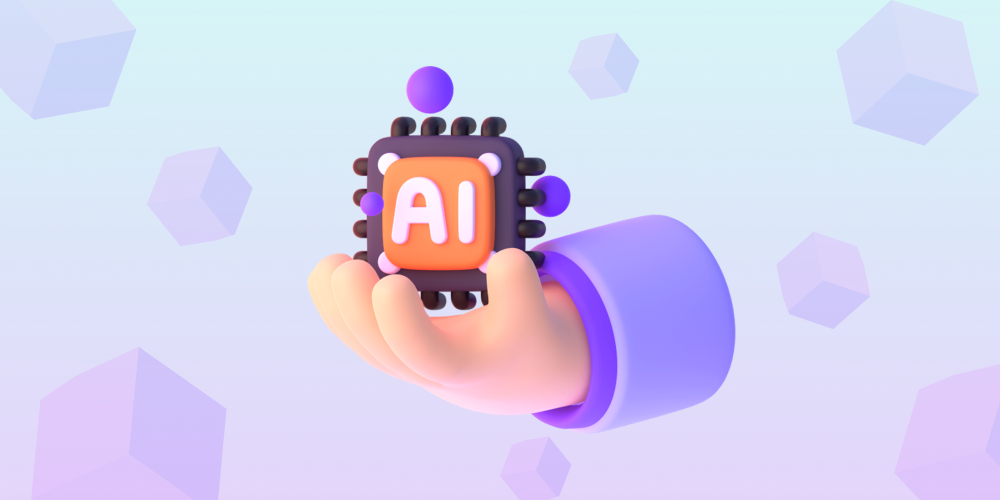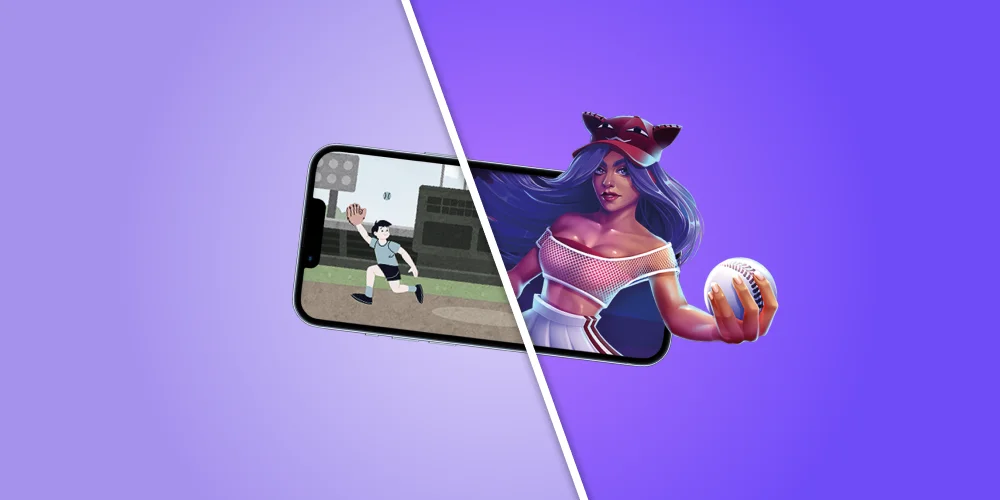
Leveraging AR in Design and Modeling: Benefits Unleashed
KEY POINTS OF THE ARTICLE
- Introduction to the integration of Augmented Reality (AR) in product design and modeling, highlighting its transformative impact on traditional processes.
- Exploration of AR’s role in enabling designers to visualize and interact with digital prototypes within real-world contexts, enhancing design accuracy and creativity.
- Discussion on the evolution of AR technology, emphasizing its growing adoption in design practices and the development of immersive digital environments.
- Examination of the intersection between AR and product modeling, focusing on how AR facilitates virtual collaboration and the creation of virtual assets.
- Analysis of the advantages of incorporating AR in product design, including improved real-time visualization, enhanced collaboration, and increased efficiency in product development.
- Presentation of successful case studies where businesses have leveraged AR for designing furniture and automotive parts, demonstrating practical applications and benefits.
- Insights into future trends of AR in design and modeling, considering its potential to revolutionize business modeling strategies and the anticipated widespread use in design teams.
- Reflection on the importance of embracing AR technology to stay competitive and innovative in the evolving landscape of product design and modeling.
Have you ever thought about revolutionizing your product design and modeling strategy? Augmented Reality (AR) is one of the most promising technologies that can help you achieve this. AR is no longer just a buzzword, but an integral part of designing and modeling products. In this blog, we will take a deep dive into AR’s role in product design, its advantages, and how it can impact real-world context beyond the screen. We will also showcase some successful case studies where businesses have leveraged AR for designing furniture and automotive parts. Lastly, we will discuss future trends and how AR can revolutionize your business modeling strategy. So, let’s get started!
Understanding Augmented Reality (AR) and its Role in Product Design
Augmented Reality (AR) integrates digital content seamlessly into the real world, enabling product designers to visualize and analyze design decisions in real time. And how do you design in ar? By overlaying virtual objects onto the physical world, AR enhances user experience, providing an immersive environment for design teams to create, collaborate, and innovate. Leveraging AR tools facilitates the creation of virtual elements within physical space, optimizing the design process through immersive digital environments. Embracing best practices in AR technology fosters a deep learning experience, enabling seamless integration of virtual elements on a computer screen or AR glasses, revolutionizing product design and ar modelling.
The Evolution of AR in Designing
The recent years have seen significant breakthroughs in AR technology, with designers incorporating sensor technologies to create immersive digital environments. This evolution of the AR design process offers valuable insights for product development and is expected to be widely used in design teams in the coming years. AR environments are reshaping the design process, providing tangible benefits and enhancing the overall product development efficiency. The integration of AR glasses and computer screens has revolutionized the way designers visualize and create products, utilizing best practices and deep learning techniques to develop innovative solutions.
Collaborating with an augmented reality game development company can further enhance the integration of AR technologies into your design processes, leading to more innovative and efficient product development.
The Intersection of AR and Product Modeling
The integration of AR technology empowers product designers to create and develop virtual assets, while benefiting from the use of artificial intelligence and machine learning in product a r modeling. Additionally, AR capabilities provide designers with virtual collaboration tools, enhancing user experience through spatial sound in AR environments. Furthermore, ar technology facilitates virtual walkthroughs for product ar modelling, offering a comprehensive and immersive design experience that goes beyond the conventional computer screen. This intersection of AR and product modeling showcases the best practices in leveraging VR technology within the virtual world of product design, ultimately reshaping the way product ar 3d modeling is approached.
The Advantages of AR in Product Design
Revolutionizing the product design process, AR technology enables designers to create immersive digital environments for real-time visualization of design prototypes. Enhancing collaboration, AR benefits product development efficiency by providing valuable insights to the designers. By utilizing AR glasses and computer screens, designers can benefit from VR technology and best practices to delve into a virtual world that facilitates deep learning. Incorporating AR best practices and Oculus Rift, designers can enhance their design process and create innovative product ar 3d model.
Real-Time Visualization and Prototyping
Real-time visualization of design elements is made possible by AR technology, expediting the design process through rapid prototyping. Furthermore, AR fosters the creation of virtual reality headset-compatible content and provides immersive digital environments for a more engaging design experience. Additionally, AR tools facilitate seamless integration of graphic design elements in real time. This enhances the overall design process, offering a comprehensive and efficient platform for designers to bring their visions to life. With AR glasses and VR technology, designers can experience a virtual world and apply deep learning best practices to create innovative designs.

Comprehensive Collaboration Across Different Zones
Comprehensive Collaboration Across Different Zones fosters global teamwork by bridging geographical gaps through AR technology. Virtual collaboration tools enhance communication among design team members, promoting real-time collaboration on product development. This technology enables teams in various locations to interact with virtual assets, fostering seamless collaboration and knowledge sharing.The ability to work together in a shared virtual world creates an environment that promotes deep learning and encourages the implementation of best practices in design and ar 3d modeling.
Enhancing Product Development Efficiency
Streamlining the product development process, AR technology optimizes design decisions for efficient development. It also aids in creating training modules and enhances the efficiency of product design collaboration. Furthermore, AR environments provide immersive training experiences for product development teams, fostering a more engaging and productive learning environment. By leveraging AR tools, product designers can seamlessly integrate design elements, ar 2 model, in real time, ensuring comprehensive and collaborative design processes. This integration of AR technology into product development not only enhances efficiency but also fosters a more innovative and dynamic approach to designing.
Going Beyond the Screen: AR’s Impact on Real-world Context
By merging digital content with the real world, 3d model ar enhanced user engagement, offering immersive experiences through smart glasses and AR capabilities. It enriches shopping experiences by overlaying virtual objects in physical space and facilitates facial recognition for personalized user experiences. Additionally, AR seamlessly integrates digital information into the physical world, creating a seamless blend of virtual and real environments. The use of AR glasses and VR technology plays a vital role in immersing users in a virtual world, enhancing their overall experience.
How AR Provides a More Immersive Experience?
Augmented reality (AR) technology creates immersive digital environments, offering users a truly engaging experience.Through smart glasses and AR environments, users can interact with ar model example overlaid in the real world. Spatial sound further enhances immersion, making AR a powerful tool for providing an unforgettable user experience.
AR’s Role in Enhancing User Engagement
Enhancing user engagement, AR technology fosters immersive experiences through virtual reality games and collaboration tools. Users can interact with virtual content using AR glasses, creating a seamless blend of the digital world and the physical environment. This integration of virtual and real-world elements offers an enriched shopping experience, providing users with a deeper level of engagement. By offering virtual reality headset-compatible content and facilitating immersive experiences, ar 3 model plays a pivotal role in and engaging users through best practices of virtual reality technology.
Case Studies: Successful Applications of AR in Product Design
Successful applications of AR in product design are evident through enhanced visualization of virtual objects in the real world. Valuable insights for product development decisions are provided by AR tools, enabling immersive digital environments for design teams. Designers use 3d model ar to create virtual walkthroughs for clients and team members, offering tangible benefits in the design process. Case studies demonstrate the effective utilization of AR technology, showcasing its potential to revolutionize product design methodologies and enhance collaboration within design teams.
Case Study 1: AR in Furniture Designing
In furniture designing, AR technology completely transforms the way designers engage with digital content. It empowers product designers to seamlessly position virtual elements in physical spaces for evaluation, fostering an immersive experience during the design process. Moreover, AR tools serve as virtual collaboration platforms for design teams, elevating their productivity and enhancing user experience. By leveraging ar 3 model, furniture designers can achieve significant breakthroughs in creating innovative and user-centric designs, ultimately revolutionizing the entire industry.
Case Study 2: AR in Automotive Designing
In automotive design, AR capabilities provide real-time visualization for design decisions, empowering designers to integrate augmented reality elements. AR tools facilitate ar game development and virtual asset for product modeling, offering spatial sound and creating immersive digital environments for VR headset testing. The technology revolutionizes the way automotive designers interact with digital content, enhancing the user experience and providing valuable insights for informed decision-making. AR goes beyond the computer screen, shaping a virtual world that aligns with best practices and deep learning ar in design and modeling.
Future Trends: AR and the Next Frontier of Product Design
Augmented reality is set to revolutionize the design landscape, redefining the future of product design. Its expansion is anticipated to enable product designers to explore mixed reality environments, creating immersive digital spaces. With AR technology becoming an integral part of the design process, the potential for significant use cases in product design is immense. So how do you design in ar? The integration of AR will lead to a new era of design, allowing designers to craft products within immersive, virtual worlds, using AR glasses and computer screens to enhance their deep learning experiences.

Predictions for AR in the Designing Landscape
The design landscape is on the brink of significant transformation with the emergence of AR technology. Future product designers are likely to heavily rely on AR for making critical design choices, tapping into its immersive capabilities. Collaboration among design teams will be revolutionized through virtual tools offered by AR technology. Additionally, the use of AR is expected to provide valuable insights for product development, influencing the design industry profoundly. As AR continues to evolve, it is set to become an indispensable asset for product designers, enhancing their ability to create within immersive virtual environments.
Preparing for an AR Dominated Future in Product Design
To stay ahead in the design landscape, product designers need to embrace AR tools, adapting to virtual assets through deep learning and best practices. This integration will transform the product development process into an immersive experience, utilizing AR glasses and virtual reality technology. Designers must prepare for the usage of smart glasses and augmented reality environments, diving into the virtual world to revolutionize product modeling. The future of product design is set to revolve around the utilization of AR capabilities, creating a more immersive and efficient design process.
How Can AR Revolutionize Your Business Modeling Strategy?
AR technology has the potential to revolutionize your business modeling strategy. By offering virtual elements that enhance the physical world experience, AR provides real-time insights and immersive digital environments. With ar 2 model capabilities, product designers can collaborate virtually and shape the future of product modeling.
Conclusion
In conclusion, augmented reality (AR) has become an invaluable tool for product design and modeling. It allows designers to visualize and prototype their creations in real-time, leading to more efficient and comprehensive collaboration. AR also enhances the user’s experience by providing a more immersive and engaging interaction with the product. Several successful case studies, such as AR in furniture and automotive designing, demonstrate its effectiveness. As we look to the future, AR is poised to revolutionize the designing landscape, and businesses need to prepare for this technological advancement. If you want to explore how AR can transform your business modeling strategy, don’t hesitate to get in touch with our friendly team for a consultation.



























